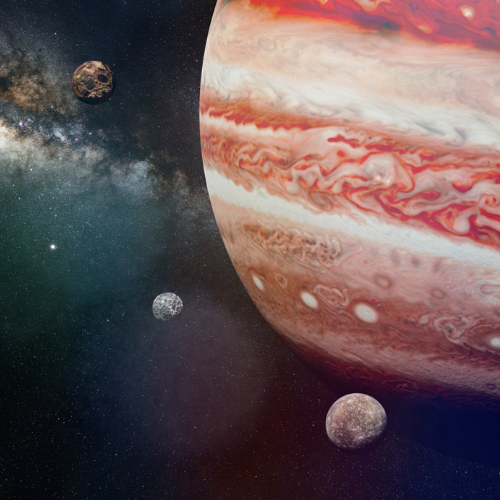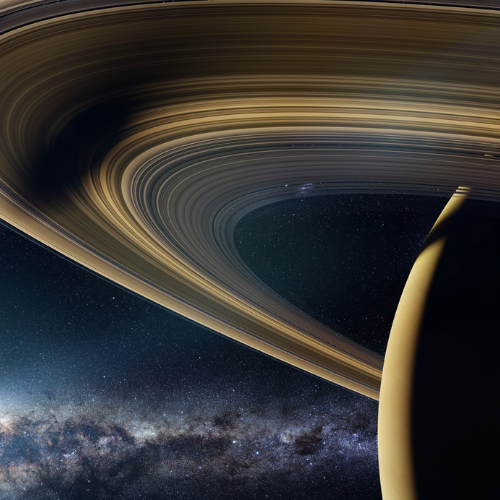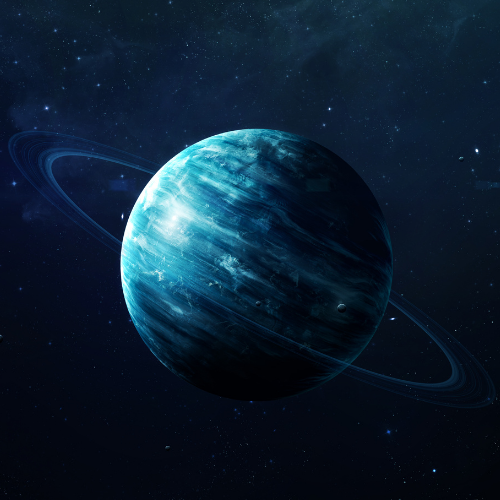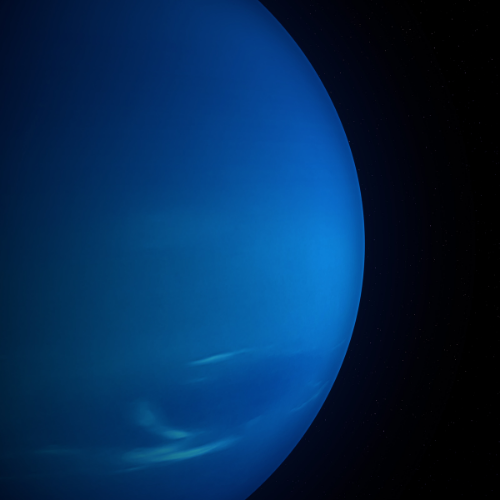The Giant Planets: 8 Facts You Won’t Know
Our Solar System is made up of 8 planets, and of these, 4 are known as the Giant Planets: a planet much larger than Earth. Join us on a journey of discovery to the Giant Planets – Jupiter, Saturn, Uranus and Neptune – as Professor Craig Underwood shares 8 fascinating facts about them…

Jupiter
1. Jupiter’s mass is more than twice that of all the other planets combined. It has a diameter larger than the smallest stars. If Jupiter was just 100 times heavier, it would ignite and become a star itself.
2. Jupiter doesn’t orbit the Sun! Jupiter is so massive, the barycentre of its orbit (the center of mass between two objects) lies just outside of the body of the Sun.

Saturn
3. The density of Saturn is less than that of water. If you could find a bath big enough, you could float it!
4. Saturn is known at the ringed planet – but it is not the only one. Jupiter, Saturn, Uranus and Neptune all have rings. So does Earth, but ours consists of belts of artificial satellites and is less than 60 years old!

Uranus
5. Uranus was the first planet to be discovered since ancient times. Although William Herschel “discovered” it, Uranus had been observed many times before, but had always been thought to be a just a faint star. At first, Herschel thought he had discovered a new comet!
6. Uranus is tilted over onto its side. This means that as it orbits the Sun, each pole in turn points at the Sun. Although Uranus rotates in just 17 hours 14 minutes, the “winter” side of the planet doesn’t see the Sun for 21 years, whereas the “summer” side has continuous daylight. As a result, the weather patterns on Uranus are very different to those on Earth.

Neptune
7. Neptune was discovered by mathematical calculation based on observing small errors in the expected position of the other planets.
8. Neptune is the solar system’s other “blue planet” – just like Earth. But on Neptune, the sky is blue due to the absorption of red light by crystals of frozen methane gas. On Earth the blue sky is due to the scattering of light by air molecules.
If you’d like to learn more about the Giant Planets, make sure to check out Craig’s online courses with the Institute this term. Whether you’re a budding space explorer, a planets expert or somewhere in between, everyone is welcome! The Gas Giants: Saturn – A Science Perspective is taking place on 16 February and The Ice Giants: Uranus and Neptune is happening on 16 March.





